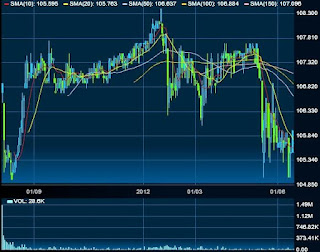HKSAR (Hong Kong Special Administration Region) is proceeding to issue its second batch of retail government bond(Full Name of HKGB 1506 Bond: HKD Retail Bonds due 2015 with Stock Code: 4214.hk) to HK residents on June 22 and then publicly list it on the Stock Exchange of Hong Kong on June 25. Issuer representative is the Hong Kong Monetary Authority (HKMA), and joint lead managers are Hong Kong and Shanghai Banking Corporation (HSBC Stock Codes: 005.hk in Hong Kong, HSBA in London, HBC in New York) and Bank of China Hong Kong Branch (BOCHK Stock Code: 2388.hk).
Just similar to the first batch of H.K. retail government bond issued last year, it is called an inflation-linked iBond with maximum issue size of HKD$10 billion and life span of 3 years (maturity date will thus be June 22, 2015 this time).
However, if you look at the IPO Prospectus more carefully, the iBond is not always inflation-linked and its yield can possibly outperform inflation rate. How can this happen? In general, interest payable to iBond holders will be semiannually paid on June 22 and December 22 every year and will be basically linked to the Moving Average Value (MAV) of Composite Consumer Price Index (C-CPI) which reflects the local inflation condition for the most recent 6 months (half-year) in Hong Kong. This is supposed to be a floating annual interest rate, but if the floating rate falls below +1% then the iBond issuer (HKSAR government) will offer a guaranteed annual interest rate of +1% (fixed rate). If this happens, its yield will surpass inflation rate especially when deflation occurs! For your reference, the issuer will not re-invest its interest payments back to any asset of retail bonds.
The Hong Kong retail iBond is normally tax-free (stamp duty fee is exempted as well). Your principal investment has to be HKD$10K (equivalent to 100 bond units) or its integral multiples. iBond subscription is initially available to H.K. residents with valid HKIDs (Hong Kong Identity Cards) only. That means H.K. residents can buy iBond at its face value (HKD$100 per unit). If over-subscribed, allocation will be carried out by ballot (just like a lucky draw). When the initial subscription period is over, foreign investors are also able to trade this Hong Kong iBond (Stock Code: 4214.hk) in the secondary market upon successfully listed on the Stock Exchange of Hong Kong (SEHK stock code: 388.hk) after June 25. Source: iBond IPO Prospectus from the Government of HKSAR (Hong Kong Special Administration Region) of PRC (People's Republic of China).
What kind of risks should H.K. iBond contain, and is it really worth investing? Since we have already answered these questions in our report about the first batch of i-Bond based on our mathematical formula and detailed calculations, we think we do not need to repeat here. Please come to: Estimated Market Price and 4 Major Risk Factors of i-Bond instead for related analysis report, which also summarizes the key differences between HKSAR i-Bond and the U.S. TIPS (Treasury Inflation-Protected Securities), U.S. I-Bonds or ISB (Inflation-linked Savings Bonds).
You may also predict the future market price of this new batch of iBond (Stock Code: 4214.hk) from historical performance of the first i-Bond batch (Stock Code: 4208.hk):

From the above historical chart of the first i-Bond batch (Stock Code: 4208.hk), you can easily observe that its historical stock price has never fallen below the face value (HKD$100 per unit). Why? It is because bond coupon rate (BCR) of i-Bond is always higher than its yield to maturity (YTM). As what we have said before, issuing iBond at face value (also called par value or nominal value) instead of issuing at premium value is something similar to a free social welfare gift in the first place since HK people can buy it at a stock price lower than its actual market value. For overseas investors, however, you may still buy it after listing in the secondary market, although it is unlikely that you can buy it at face value or even at a low-premium price.
Although inflation has begun to ease in recent couple of months, do not afraid of it as we already mentioned that this iBond is not always inflation-linked and its yield can possibly outperform the inflation rate (especially during period of deflation). That means you can use it to hedge against risks of serious inflation or even deflation.
In fact, this H.K. iBond is a better tool to hedge inflation than traditional tools (such as gold or commodities). Taking historical data in 2011 as an example, i-Bond stock price gained by 6.75% (HKD$106.75 at the close) and its first coupon interest rate (% p.a.) was 6.08%. The CRB commodity index, however, fell by -7% YoY (a negative return) in 2011 and therefore could not fight against inflation at all. A simple comparison suggests that H.K. i-Bond clearly wins because it not only can achieve capital preservation but can also offer stable and better returns.
Bond Analysis Conclusion:
Just similar to the first batch of H.K. retail government bond, we do recommend a buy for this second batch of iBond (Stock Code: 4214.hk) in the primary market if you are a Hong Kong resident. From investment point of view, yield of Hong Kong iBond is much higher than the yield to maturity (YTM) of Hong Kong Exchange Fund Notes (HK-EFN) for the same period. Furthermore, by making use of standard deviation (s.d.) as a risk indicator to measure its stock price risk, you will find that standard deviation (s.d.) of one-day iBond stock price change is only around 0.23% since initial listing and hence we can conclude that it is rather a statistically low-risk product.
Additional Bond (and Stock) Analysis Reports:
Summary Table: Complete List of Our Bond (and Stock) Analysis
0 Comments:
Post a Comment